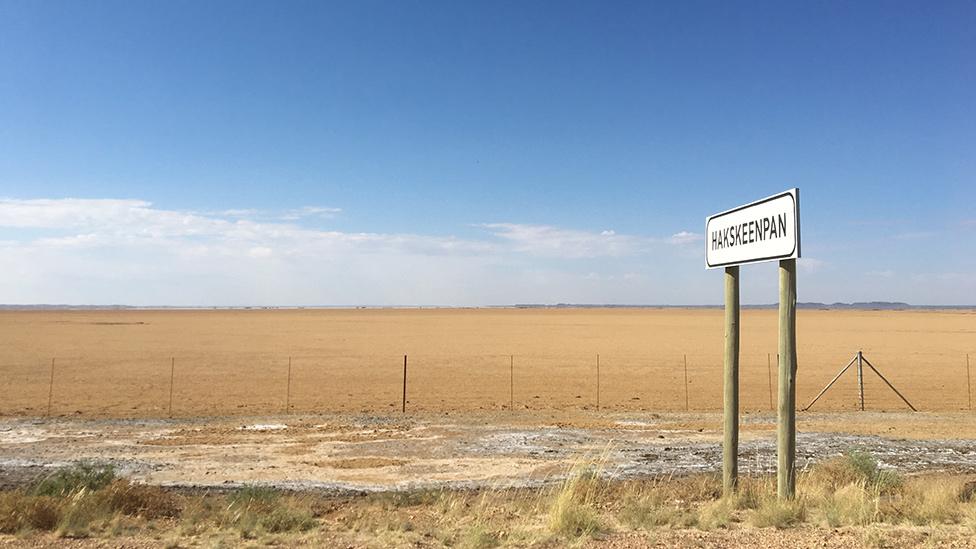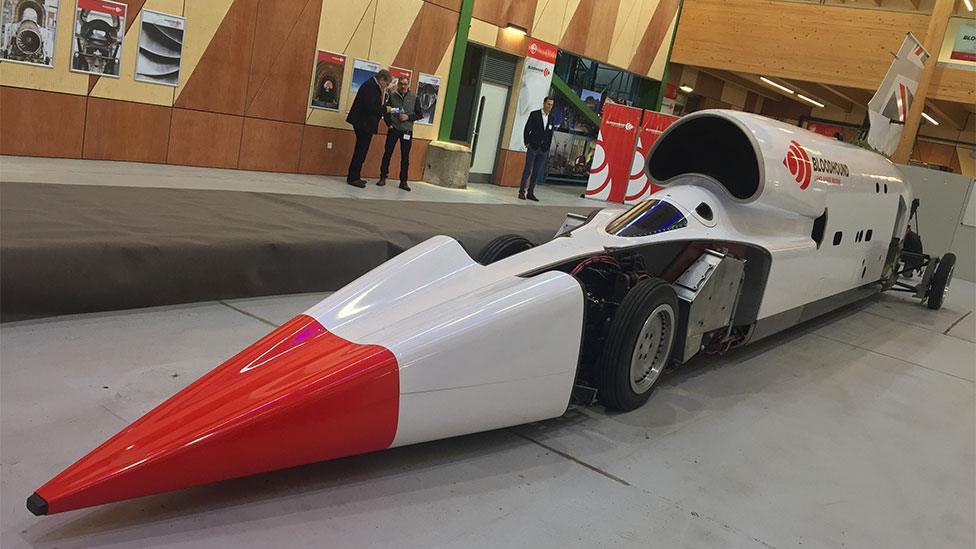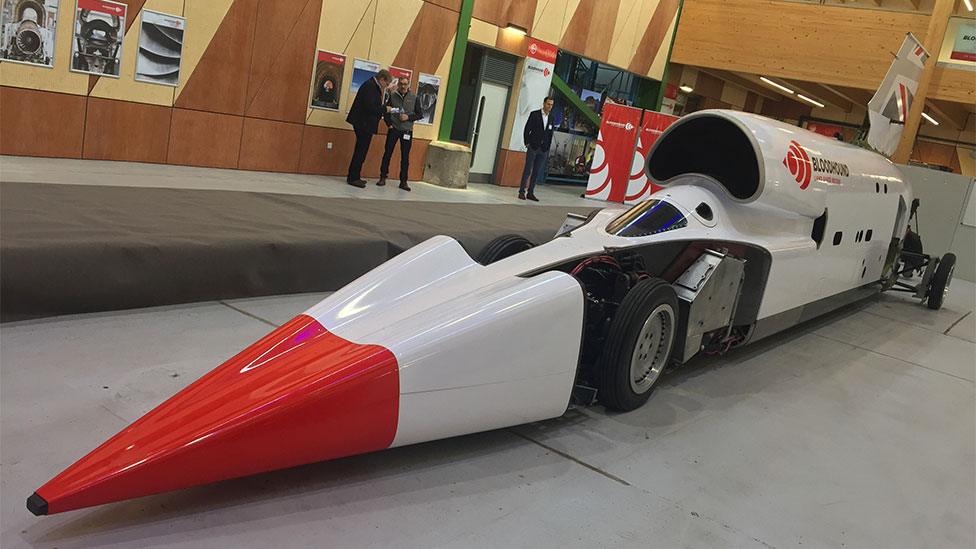Bloodhound supersonic car to run at high speed in October
- Published
Ian Warhurst: "South Africa is waiting for the Bloodhound"
The Bloodhound supersonic car will conduct high-speed trials in October.
The team behind the rejuvenated project says it now has the financing to go test the vehicle at 500-600mph.
This should provide the engineering data required to send Bloodhound through the sound barrier and to smash the existing land speed record (763mph; 1,228km/h) in 2020.
The trials will be conducted on Hakskeen Pan, a dried-out lakebed in Northern Cape, South Africa.
The UK-led venture was rescued from administration by Yorkshire entrepreneur Ian Warhurst in December.
He has spent recent months restructuring the business side of Bloodhound, including moving its technical HQ from Bristol to Berkeley in Gloucestershire.
Mr Warhurst has now committed the team to what he says are deliverable goals. And to follow through on that determination, he is personally underwriting October's trials.
"This is new territory for the Bloodhound project," he told reporters. "Six months ago, all this seemed a long way out of reach, but this is a reality now. We're paying out funds as we speak; we're financially committed to going (to South Africa)."

The high-speed trials will take place on Hakskeen Pan, a dried-out lakebed in Northern Cape
The current land speed record was set by the Thrust Super Sonic Car (SSC) in 1997, on the Black Rock Desert of Nevada, US.
The driver on that occasion was RAF pilot Andy Green, and he will be at the controls of Bloodhound, also.
He's run the new car at low speeds (200mph) but he's keen now to stretch the vehicle's performance, to raise the pace to between 300mph and 500mph.
This will stress Bloodhound's systems. The team will learn how to go fast, but also, just as important, how to slow down, using a combination of air brakes, parachutes and steel discs.
In addition, 400-500mph is the realm where Bloodhound's stability is expected to transition from being governed by the interaction of its wheels with the playa muds of Hakskeen to being controlled by the car's aerodynamics.
It's anticipated that the grip from the wheels will fall off faster than the aerodynamic forces can build up, meaning the driver is almost certain to experience a period of very tricky handling.
"The car is likely to feel like it's driving on sheet ice at that point," said Wing Commander Green. "That's when we'll find out just how well we've set up the car. It's going to be an important experiment in order to be able to control the car across its speed range."
Andy Green on intermediate speed traction: "It will feel like driving on sheet ice"
The trials will see the car run without its rocket engine installed; it will be powered solely by a Rolls-Royce Eurofighter jet engine.
This obviously limits the peak speed that can be attained this year, but if weather conditions are favourable then it's just possible Bloodhound could sneak above 600mph.
Waiting on the outcome of the tests will be aerospace partner Nammo.
The Norwegian company must determine the precise configuration of rocket motors needed to punch through the sound barrier and top 800mph when Bloodhound returns to Hakskeen in 2020.
But getting back next year will be dependent on new money coming into the team.
Commercial director Ewen Honeyman is confident however that when potential sponsors witness a high-speed Bloodhound in action this October, they'll be a eager to get involved.
And pointing to the car's bare white bodywork, he said: "For the first time we're offering title and livery sponsorship." This is akin to the stadium naming rights that football clubs now offer key sponsors.
Most of the sponsorship conversations currently are prospective digital partners. These had an interest either in the data side of engineering, or in the business of media distribution, Mr Honeyman explained.

As the car goes faster, its wheels will begin to plane across the surface - like the hull of a boat
Slow speed (200mph) trials were conducted back in 2017 - the only previous time the car has run
Jonathan.Amos-INTERNET@bbc.co.uk, external and follow me on Twitter: @BBCAmos, external
- Published21 March 2019

- Published28 March 2019

- Published11 June 2019
